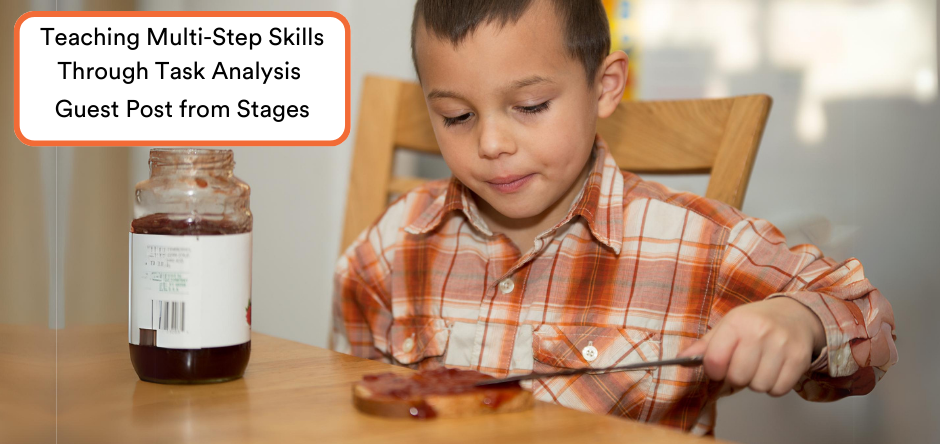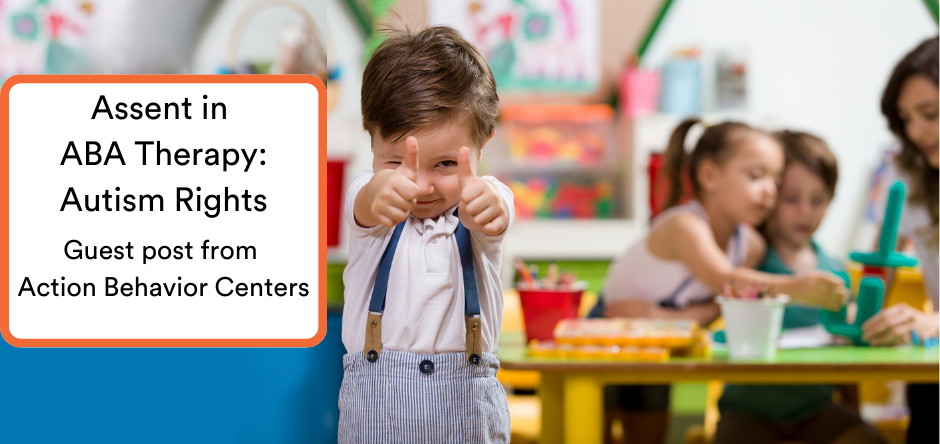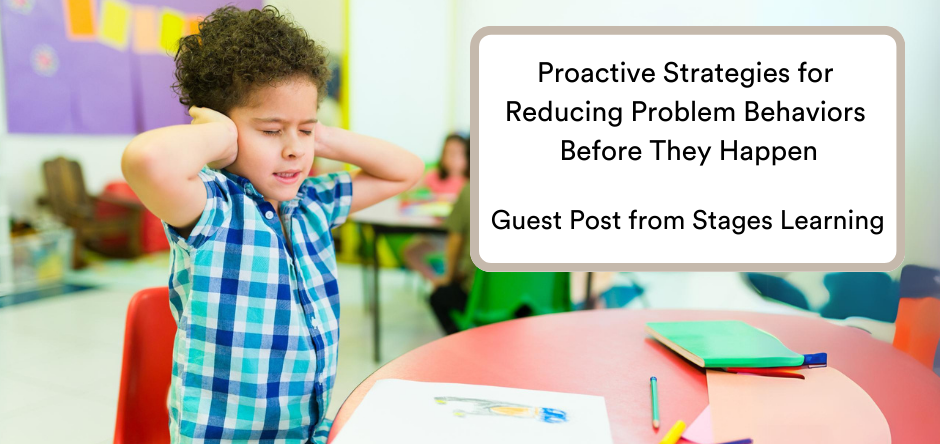
This month’s ASAT article comes to us from Mi Trinh, BA, and Executive Director David Celiberti, PhD, BCBA-D, Association for Science in Autism Treatment. To learn more about ASAT, please visit their website at www.asatonline.org. You can also sign up for ASAT’s free newsletter, Science in Autism Treatment, and like them on Facebook!
Description
Learning how to interact and engage with other children is among the many social challenges that children with autism spectrum disorder (ASD) confront, with some finding even minimal social interaction difficult. Including siblings in treatment can be potentially effective in helping a child with autism build these important interaction skills. Behavioral Sibling Training is the practice of engaging neurotypical siblings of an individual with ASD in the intervention efforts for a child with ASD hopefully leading to positive interactions in the future, as well as improved social and play skills (Ferraioli et al, 2012). For example, in a study conducted by Celiberti and Harris (1993), neurotypical siblings were taught in their homes how to target play and play-based language, to reinforce positive behaviors, and to prompt their siblings with autism to promote responding. Including siblings as agents of change is a natural extension of the existing literature on peer-mediated interventions, which has been studied and shown to be effective for many decades (e.g., Lancioni, 1982; Strain, Shores, & Timm, 1977; Wahler, 1967).
Prior to describing the research basis for involving siblings as intervention agents, it would be helpful to share with the reader other ways siblings may be engaged and supported outside of being a participant in interventions. Many programs already provide services to siblings that may include, although are not limited to, education about autism, social opportunities (“Sibling Appreciation Day”), and ongoing or time-limited sibling support groups. These latter experiences may include some aspects of skill building (e.g., communicating needs to parents, coping with stress, addressing peer questions about autism) but these are often narrow in focus, time limited in nature, and not intensive. As such, they are beyond the scope of this review. Further, there are some providers that target social initiation and play skills in other settings (e.g., school) and may request that parents arrange and/or assess the extent to which these newly acquired skills generalize during interactions with siblings in the home. In this case, siblings are often not provided specific training in how to facilitate that carryover and, therefore, this would not be considered an example of Behavioral Sibling Training.
Research Summary
Extensive systematic reviews of the research literature on the efficacy of using siblings in interventions for children with ASD have been carried out (e.g., Banda, 2015; Bene & Lapina, 2021). Sibling training efforts have included participants who are pre-school age (e.g., Jones & Schwartz, 2004; Oppenheim-Leaf et al., 2012; Tsao & Odom, 2006), school-age (e.g., Celiberti & Harris, 1993; Ferraioli & Harris, 2011; Glugatch & Machalicek, 2021), and adolescent (e.g., Rayner, 2011a; Walton & Ingersoll, 2012). Targeted skills have included cooperative play skills (e.g., Celiberti & Harris, 1993; Coe et al., 1991; Glugatch & Machalicek, 2021; Reagon et al, 2006), social interactions (e.g., Dodd et al, 2008; Strain & Danko, 1995), joint attention (e.g., Ferraioli & Harris, 2011; Tsao & Odom, 2006), motor skills (Colletti & Harris, 1977), imitation skills (e.g., Rayner, 2011a), and self-help skills (e.g., Rayner, 2011b). Intervention methods have included elements such as didactic teaching and roleplaying (e.g., Oppenheim-Leaf, Leaf, Dozier, Sheldon, & Sherman, 2012), in vivo modeling (e.g., Celiberti & Harris, 1993) and video modeling (e.g., Neff, Betz, Saini, & Henry, 2016). For more information about video modeling, please see Evoy (2023).
These studies showed that there were mutual benefits for both neurotypical siblings and siblings with ASD after treatments that engaged the typically developing siblings (Ferraioli et al, 2012). For children with ASD, researchers observed gains in targeted social-communication and play skills, and a decrease in problematic behaviors (Shivers & Plavnick, 2014). For neurotypical siblings, studies report an increase in confidence and pleasure in interaction with their brother or sister with ASD and a decrease in sibling frustration (Shivers & Planick, 2014; Banda, 2015). When typically developing siblings were trained to use behavioral strategies, they not only learned to generalize these strategies to facilitate social and communication behaviors with their siblings with ASD across various settings, but they also improved their own social behaviors from developing a more positive view on the siblings with ASD (Shivers & Plavnick, 2014; Banda, 2015; Bene & Lapina, 2020).
Bene and Lapina (2020) shared some encouraging data with respect to both generalization and maintenance, as well as social validity. In their review, 7 of the 16 studies reported generalization and maintenance although the probes were generally just a few months post-treatment. In addition, 11 of the 16 studies offered social validity information; however, this varied widely across studies. Although these studies often included reports of parental or sibling satisfaction with the outcomes, other studies used naïve observers to demonstrate that changes were observed in the siblings before and after intervention and these changes were positive in nature.
However, these literature reviews also point out many limitations across studies. For instance, the roles of neurotypical siblings vary across studies: some were passive (i.e., modeling behaviors through videos, or included in social stories), while some were active interventionists. Future studies should investigate how the extent of siblings’ involvement influences the impact on children with autism (Banda, 2015). There is also a need for further research about other factors that might influence the effectiveness of siblings’ interventions, such as age, gender, and closeness between the siblings (Shivers & Plavnick, 2014). Finally, most of the reviewed studies lacked long-term follow-up, which is necessary to make a definite conclusion regarding the long-term impacts of utilizing siblings in interventions (Shivers & Plavnick, 2014; Banda, 2015; Bene & Lapina, 2020). Aside from further research looking into the maintenance of the intervention effects, Glugatch and Machalicek (2021) also suggested that component analyses look carefully at which specific skills are pivotal to reciprocal play.
Recommendations
Based on the reviews of the existing body of literature, further research with better experimental designs is warranted to draw more robust conclusions regarding the long-term effects of engaging neurotypical siblings in intervention plans for children with autism. Although there is evidence across studies that these intervention models show positive impacts for both neurotypical siblings and for their siblings with autism, a better understanding of those benefits is an area warranting more research. Therefore, professionals and parents should base their decisions to pursue sibling training on a case-by-case basis, carefully considering their specific goals, and evaluating whether those goals and proposed methods align with the existing research (Banda, 2015). Despite the need for more research, Banda (2015) points out that utilizing siblings in interventions for children with autism might result in long-term improvement in siblings’ relationship and overall family wellbeing. These collateral effects can also be studied systematically as this body of research is expanded.
With respect to implementation, it is important that providers offering sibling training are practicing within their scope of competence. As sibling training often occurs in the home, providers should be particularly sensitive to family, cultural, linguistic, and socioeconomic considerations to enhance outcomes and overall experiences for all members of the family. Assent on the part of the sibling should be assessed at the onset and revisited frequently as the intervention unfolds and social validity can include more in-depth consideration of the siblings’ views on goals, interventions, materials chosen, etc. Parents and guardians interested in including their child with ASD’s siblings in intervention should inquire about providers’ prior experiences including siblings as agents of change and be open about family values, strengths, and limitations – even if not adequately solicited by prospective providers.
Finally, we encourage parents to be mindful of the potential knowledge differential surrounding autism between the autistic child and their sibling, particularly when the sibling is engaged in intervention (i.e., provided with background information, given strategies). For autistic children who do not yet understand much about their diagnosis, be as sensitive as possible when explaining it to others (such as the sibling), discussing it, or otherwise referring to it; and consider what steps can be taken to help the individuals with autism better understand their differences (e.g., Weiss & Pearson, 2016).
References
Systematic Reviews of Scientific Studies
Banda, D. R. (2015). Review of sibling interventions with children with autism. Education and Training in Autism and Developmental Disabilities, 50(3), 303-315.
Bene, K., & Lapina, A. (2020). A meta-analysis of sibling-mediated intervention for brothers and sisters who have autism spectrum disorder. Review Journal of Autism and Developmental Disorders, 8(2), 186-194.
Shivers, C. M., & Plavnick, J. B. (2015). Sibling involvement in interventions for individuals with autism spectrum disorders: A systematic review. Journal of Autism and Developmental Disorders, 45, 685-696.
Selected Scientific Studies
Celiberti, D. A., & Harris, S. L. (1993). Behavioral intervention for siblings of children with autism: A focus on skills to enhance play. Behavior Therapy, 24(4), 573-599.
Coe, D. A., Matson, J. L., Craigie, C. J., & Gossen, M. A. (1991). Play skills of autistic children: Assessment and instruction. Child & Family Behavior Therapy, 13(3), 13-40.
Colletti, G., & Harris, S. L. (1977). Behavior modification in the home: Siblings as behavior modifiers, parents as observers. Journal of Abnormal Child Psychology, 5(1), 21-30.
Dodd, S., Hupp, S. D., Jewell, J. D., & Krohn, E. (2008). Using parents and siblings during a social story intervention for two children diagnosed with PDD-NOS. Journal of Developmental and Physical Disabilities, 20, 217-229.
Ferraioli, S. J., & Harris, S. L. (2011). Teaching joint attention to children with autism through a sibling‐mediated behavioral intervention. Behavioral Interventions, 26(4), 261-281.
Glugatch, L. B., & Machalicek, W. (2021). Examination of the effectiveness and acceptability of a play-based sibling intervention for children with autism: A single-case research design. Education and Treatment of Children, 44(4), 249-267.
Jones, C. D., & Schwartz, I. S. (2004). Siblings, peers, and adults: Differential effects of models for children with autism. Topics in Early Childhood Special Education, 24(4), 187-198.
Neff, E. R., Betz, A. M., Saini, V., & Henry, E. (2016). Using video modeling to teach siblings of children with autism how to prompt and reinforce appropriate play. Behavioral Interventions, 32, 193-205.
Oppenheim-Leaf, M. L., Leaf, J. B., Dozier, C., Sheldon, J. B., & Sherman, J. A. (2012). Teaching typically developing children to promote social play with their siblings with autism. Research in Autism Spectrum Disorders, 6(2), 777-791.
Rayner, C. (2011a). Sibling and adult video modelling to teach a student with autism: Imitation skills and intervention suitability. Developmental Neurorehabilitation, 14(6), 331-338.
Rayner, C. (2011b). Teaching students with autism to tie a shoelace knot using video prompting and backward chaining. Developmental Neurorehabilitation, 14(6), 339-347.
Reagon, K. A., Higbee, T. S., & Endicott, K. (2006). Teaching pretend play skills to a student with autism using video modeling with a sibling as model and play partner. Education and treatment of children, 517-528.
Strain, P. S., & Danko, C. D. (1995). Caregivers’ encouragement of positive interaction between preschoolers with autism and their siblings. Journal of Emotional and Behavioral Disorders, 3(1), 2-12.
Tsao, L. L., & Odom, S. L. (2006). Sibling-mediated social interaction intervention for young children with autism. Topics in Early Childhood Special Education, 26(2), 106-123.
Walton, K. M., & Ingersoll, B. R. (2013). Improving social skills in adolescents and adults with autism and severe to profound intellectual disability: A review of the literature. Journal of Autism and Developmental Disorders, 43, 594-615.
Other References
Evoy, K. (2023). Video Modeling: A treatment summary. Science in Autism Treatment, 20(08).
Ferraioli, S. J., Hansford, A., & Harris, S. L. (2012). Benefits of including siblings in the treatment of autism spectrum disorders. Cognitive and Behavioral Practice, 19(3), 413-422.
Lancioni, G. E. (1982). Normal children as tutors to teach social responses to withdrawn mentally retarded schoolmates: Training, maintenance, and generalization. Journal of Applied Behavior Analysis, 15(1), 17-40.
Strain, P. S., Shores, R. E., & Timm, (1977). Effects of peer social initiations on the behavior of withdrawn preschool children. Journal of Applied Behavior Analysis, 10(2), 289-298.
Wahler, R. G. (1967). Child-child interactions in free field settings: Some experimental analyses. Journal of Experimental Child Psychology, 52(2), 278-293.
Weiss, M. J., & Pearson, N. (2016). Clinical Corner: How to manage the impact of child with autism on siblings. Science in Autism Treatment, 13(2), 22-26.
Citation
Trinh, M., & Celiberti, D. (2024). Treatment Summary: Behavioral sibling training Science in Autism Treatment, 21(01).
About the Authors
Mi Trinh, BA earned her bachelor degree in Finance from Brigham Young University in 2014 and is a former ASAT Extern. During her externship, she wrote a few articles for ASAT and translated several ASAT articles into Vietnamese as part of her project in disseminating evidence-based information about autism treatments internationally. One of her topics of interest is the collaboration between behavioral analysts and speech language pathologists. She is starting the PhD program in Speech and Hearing Sciences with a clinical track in Speech Language Pathology at the University of Iowa in the Fall 2024.
David Celiberti, PhD, BCBA-D, is the Executive Director of ASAT and Past-President, a role he served from 2006 to 2012. He is the Editor of ASAT’s monthly publication, Science in Autism Treatment. He received his PhD in clinical psychology from Rutgers University in 1993 and his certification in behavior analysis in 2000. Dr. Celiberti has served on a number of advisory boards and special interest groups in the field of autism, applied behavior analysis (ABA), and early childhood education. He works in private practice and provides consultation to public and private schools and agencies in underserved areas. He has authored several articles in professional journals and presents frequently at regional, national, and international conferences. In prior positions, Dr. Celiberti taught courses related to ABA at both undergraduate and graduate levels, supervised individuals pursuing BCBA certifications, and conducted research in the areas of ABA, family intervention, and autism.









